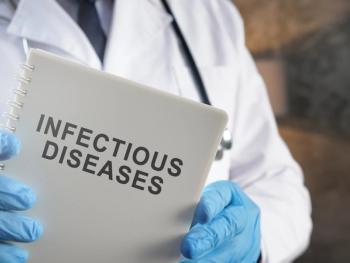
Education, Testing Necessary to Reduce Stigma and Combat Increases in STIs
Rates of sexually transmitted infections are on the rise.
A Lancet Child and Adolescent Health1 editorial focused on the adolescent and young adult sexually transmitted infection (STI) epidemic and how it can be combatted through testing, treatment, vaccination, and education.
STIs on the Rise, Especially in Young People
STI infections have been increasing. The CDC reported 2.4 million new STI cases by the end of 2020; rates of gonorrhea, syphilis, and chlamydia have been increasing since 2013.1
According to the CDC, most cases occurred in adolescents and young adults aged 15-24, accounting for 53% of new STIs in 2020.1 While chlamydia rates stayed the same, with 1.6 million new infections in 2020, the CDC reported that gonorrhea increased by 45%, syphilis by 52%, and congenital syphilis by 235% (which reflects the rate in women of childbearing age) by the end of 2020.1
Adolescents and Young Adults are Most at Risk
Authors of the editorial highlighted that adolescents and young adults at higher risk for STIs include those with multiple or serial partners, those who live in poverty, and those who use barrier methods such as condoms inconsistently or incorrectly. “In 2020, only 51% of sexually active adolescents reported using a condom during intercourse,” the editorial noted.1 Rates of STIs in teens and young adults are increased due to reduced access to healthcare providers and a lack of awareness about STIs, the editors reported.
Fighting Back
The STI National Strategic Plan for 2021 20252 seeks to reduce the number of infections in adolescents, young adults, and at-risk, underserved populations. These include racial and ethnic minorities, and men who have sex with men (MSM).1,2 The plan is to increase screening to treat infections earlier and reduce adverse outcomes. According to the editorial, the CDC wants to increase the annual chlamydia screening rate from 59% to 77% for women under 25 by 2030.1,2
Vaccination
Vaccinating adolescents against human papillomavirus (HPV) before they become sexually active is “one of the most effective public health interventions to reduce STI rates.” Only 50% of all 13- to 17-year-olds in the United States received the full HPV vaccination series in 2018, the editors reported. Increasing rates of vaccine hesitancy will make the CDC target of 85% coverage in teens by 2030 very difficult, the editors said.
Individualized Interventions
“Effective interventions tailored to individual needs are essential for adolescents who initiate sexual relationships at an early age, young MSM, those with mental health disorders or substance misuse, and those in youth detention facilities or engaged in commercial sexual exploitation,” the editors wrote. Of particular note, editorial authors reported that the FDA approved the first condom for anal sex in February 2022. Widespread use could help prevent STIs in young MSM.1
It is important for providers to remember that sexual education and STI prevention information may not reach high risk groups, the editors said. Young people face confidentiality barriers because their healthcare is accessed via and reported to family insurance plans.1 “Adolescence is a period of growing independence, and young people should be afforded privacy around their relationships. Creating trusted, inclusive, and confidential consultation spaces, and building relationships with guardians and health workers, are crucial for reaching young people for education, screening, and provision of treatment,” the editors emphasized.
They also noted that it will be difficult for interventions to be successful as long as shame accompanies STI diagnosis. They said that stigma causes the epidemic to be worse, especially when people make assumptions about the sexual behavior or lifestyle of adolescents or young adults. “Sex education must be evidence based, normalize sexual relationships, and inform a diverse population of young people about a safe and healthy sex life. Stigma is the root of this epidemic, but it doesn’t have to be this way,” they concluded.1
Reference
1. The Lancet Child Adolescent Health. Youth STIs: an epidemic fuelled by shame. Lancet Child Adolesc Health. 2022;6(6):353. doi:10.1016/S2352-4642(22)00128-6
2. Sexually Transmitted Infections National Strategic Plan for the United States: 2021-2025. CDC. Published 2020. Updated January 19, 2021. Accessed April 10, 2023. https://npin.cdc.gov/publication/sexually-transmitted-infections-national-strategic-plan-united-states-2021%E2%80%932025
Newsletter
Pharmacy practice is always changing. Stay ahead of the curve with the Drug Topics newsletter and get the latest drug information, industry trends, and patient care tips.















































































































